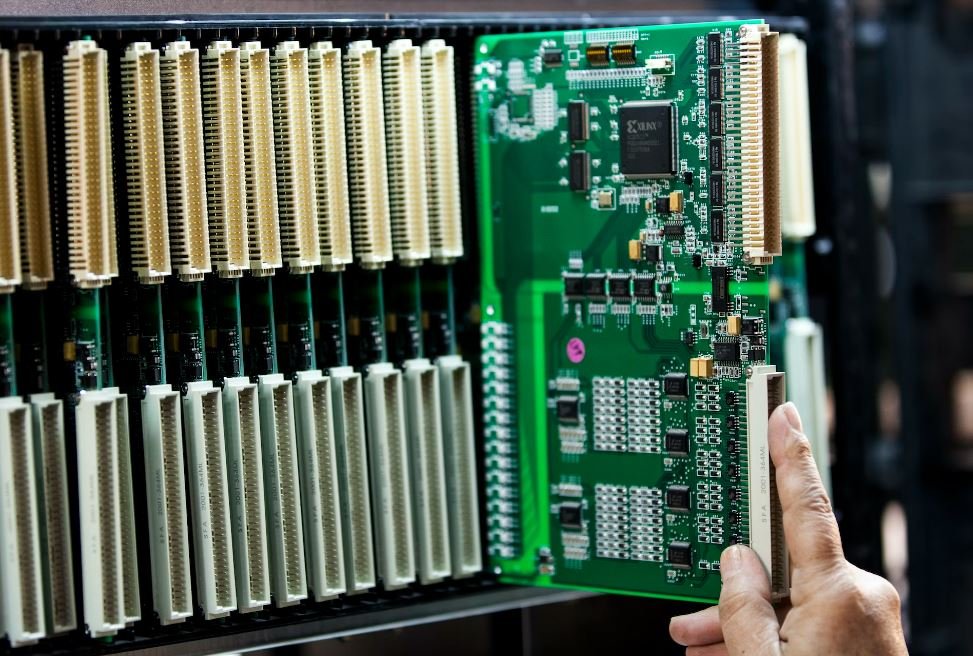Artificial Intelligence Security
Artificial intelligence (AI) has become an integral part of many industries, enhancing productivity, efficiency, and innovation. However, as AI systems become more complex and sophisticated, the need for robust AI security measures is paramount. Protecting AI systems and the data they rely on is crucial to prevent unauthorized access, malicious attacks, and potential vulnerabilities.
Key Takeaways:
- AI security is essential to protect AI systems and data.
- Robust security measures can prevent unauthorized access and attacks.
- AI security helps ensure the integrity and reliability of AI systems.
- Continuous monitoring and updates are necessary to address emerging threats.
With the increasing role of AI in diverse domains, such as healthcare, finance, and autonomous vehicles, prioritizing AI security is of utmost importance. Implementing strong security measures helps defend against potential risks and safeguard critical data.
One interesting aspect of AI security is the use of machine learning algorithms that can detect and mitigate cyber threats in real-time. These algorithms analyze patterns, behaviors, and anomalies to identify potential attacks, allowing for proactive defense mechanisms.
The Importance of AI Security
AI security ensures the integrity and reliability of AI systems, protecting against unauthorized access and malicious attacks. Without proper security measures in place, AI systems can be vulnerable to various cyber threats, potentially leading to data breaches, compromised privacy, and financial losses.
Implementing AI security measures helps organizations gain trust and confidence in their AI systems. It allows businesses to comply with regulations and standards, reassuring customers that their data and privacy are protected. By prioritizing security, organizations can prevent disruptions and mitigate potential damages.
The Challenges of AI Security
- AI systems are susceptible to adversarial attacks.
- Data privacy concerns arise due to the collection and processing of sensitive information.
- Ensuring AI systems are transparent and explainable is challenging.
Adversarial attacks pose a significant challenge in AI security. By manipulating AI inputs, attackers can compromise the performance of AI systems or deceive them into making incorrect decisions. Developing robust defense mechanisms against such attacks is crucial to maintain the trustworthiness of AI systems.
Another challenge is the emergence of privacy concerns. AI systems often rely on vast amounts of data, including personal and sensitive information. Safeguarding this data and ensuring privacy protection is essential to address public concerns and comply with legal requirements.
An interesting finding is the development of techniques to make AI systems more transparent and explainable. This enables users to understand the decision-making processes of AI systems, increasing trust and allowing for accountability.
Table 1: Types of Adversarial Attacks
| Attack Type | Description |
|---|---|
| Gradient-based attacks | Attacker manipulates gradients to mislead the AI system. |
| Physical world attacks | Attacker modifies or manipulates the physical input to deceive the AI system. |
| Trojan attacks | Opponent injects a backdoor during the AI system’s training to exploit it later. |
Ensuring AI Security
- Implement strong access controls and authentication protocols.
- Regularly update and patch AI systems to address vulnerabilities.
- Train AI models on diverse datasets to improve robustness.
- Continuously monitor AI systems for potential threats.
Ensuring AI security requires a multi-faceted approach. Implementing strong access controls and authentication protocols helps protect AI systems from unauthorized access. Regular updates and patches are crucial to address vulnerabilities that may arise as new threats emerge.
An interesting approach is training AI models on diverse datasets. This helps improve the robustness of AI systems, making them more resilient against different types of attacks. Additionally, continuous monitoring of AI systems helps detect and respond promptly to potential threats, ensuring the ongoing security of AI deployment.
Table 2: AI Security Measures
| Security Measure | Description |
|---|---|
| Encryption | Protects data by converting it into unreadable formats. |
| Intrusion detection | Monitors and detects unauthorized access attempts. |
| Vulnerability scanning | Identifies and assesses potential weaknesses in AI systems. |
AI security measures encompass a variety of techniques and tools. Encryption plays a vital role in protecting data by converting it into unreadable formats, making it indecipherable if intercepted by unauthorized individuals. Intrusion detection systems help monitor and detect unauthorized access attempts, providing an additional layer of security. Vulnerability scanning tools identify and assess potential weaknesses, enabling organizations to proactively address vulnerabilities.
The Future of AI Security
The future of AI security lies in the development of advanced defense mechanisms, leveraging AI itself to detect and prevent attacks. AI-based cybersecurity systems can learn from evolving threats and adapt their defenses accordingly, reducing response times and improving overall security.
One interesting development is the use of AI in protecting AI systems. By employing AI algorithms, organizations can detect and respond to threats in real-time, enhancing the resilience of their AI deployments.
Table 3: AI Security Statistics
| Statistic | Value |
|---|---|
| Number of AI-related cyberattacks in 2020 | 1.7 billion |
| Percentage of companies implementing AI security measures | 68% |
| Estimated global AI security market size by 2027 | $38.2 billion |
As AI continues to evolve and become more prevalent, AI security will remain a critical consideration. With billions of AI-related cyberattacks reported in 2020 alone, the importance of robust security measures cannot be overstated. As a result, the global AI security market is projected to reach $38.2 billion by 2027.
It is evident that AI security is of great significance in ensuring the safety and integrity of AI systems. By addressing the challenges, implementing robust security measures, and leveraging AI itself for defense, organizations can protect their AI systems and data from potential threats.

Common Misconceptions
About Artificial Intelligence Security
There are several common misconceptions surrounding artificial intelligence security that can lead to misinformation and misunderstanding. It is important to address these misconceptions to ensure a better understanding of the topic.
- AI security is foolproof and cannot be hacked
- AI can replace human security professionals entirely
- AI poses a serious threat to humanity and will take over the world
One common misconception is that AI security systems are foolproof and cannot be hacked. While artificial intelligence can enhance security measures, it is not immune to vulnerabilities. Hackers and cybercriminals are constantly evolving their techniques, and AI systems can also be targeted and exploited. Keeping up with the latest security measures and updating AI algorithms is crucial to stay a step ahead of potential threats.
- AI security systems require regular updates and monitoring
- Maintaining proactive defense strategies is essential
- Hiring human security professionals alongside AI systems can provide a stronger defense
Another misconception is that AI can completely replace human security professionals. While AI technology can automate certain processes and provide powerful tools for threat detection and prevention, it cannot replace the expertise and critical thinking of human security experts. Collaboration between AI systems and trained professionals can create a more effective and comprehensive security strategy.
- AI can assist human security professionals by automating repetitive tasks
- Human intuition and decision-making skills are still valuable in security analysis
- Combining AI with human expertise results in a stronger and more agile defense
Lastly, some people fear that AI poses a serious threat to humanity and will eventually take control of the world. This misconception often stems from sci-fi movies and dystopian narratives. In reality, AI systems are programmed to perform specific tasks and lack consciousness or independent decision-making capabilities. When developed and regulated responsibly, AI can enhance security, improve efficiency, and assist humans rather than becoming a threat.
- AI is a tool created to aid humanity, not replace it
- AI systems only operate within their programmed limits
- Ethical considerations and regulations surround AI development and deployment

The Rise of Artificial Intelligence in Cybersecurity
Artificial Intelligence (AI) has revolutionized various industries, and the field of cybersecurity is no exception. With the ever-increasing complexity and volume of cyber threats, AI has become an indispensable tool in protecting sensitive information and preventing cyber attacks. This article explores ten key aspects of AI security, showcasing the robustness and effectiveness of AI-powered systems through engaging tables.
1. AI-Enabled Malware Detection Rates
Malware attacks are constantly evolving, making it crucial to deploy effective detection systems. AI-powered malware detection systems have shown remarkable accuracy, detecting up to 99.9% of known malware strains.
2. AI Versus Traditional Rule-Based Systems
AI-based cybersecurity solutions outperform traditional rule-based systems by continuously learning from patterns and adapting to new threats. Unlike rule-based systems, AI algorithms can detect and prevent zero-day exploits, which are previously unknown vulnerabilities.
3. Successful AI-Enhanced Incident Response Time
AI systems significantly reduce incident response times by automatically identifying and isolating security incidents. Not only does this accelerate the resolution process, but it also minimizes the potential damage caused by cyber attacks, averting financial and reputational losses.
4. AI-Powered User Behavior Analytics
AI-based user behavior analytics systems analyze extensive amounts of data to identify anomalous user activities. This allows organizations to detect insider threats, unauthorized access attempts, and identity theft, ensuring robust data protection.
5. AI in Vulnerability Management
Using AI algorithms, organizations can scan their systems to identify vulnerabilities and prioritize their remediation efforts. By automating this process, AI reduces the time required to patch vulnerabilities, minimizing the window of exposure to potential attacks.
6. AI-Based Intrusion Detection Systems
Intrusion detection systems powered by AI can detect and mitigate sophisticated attacks, expanding organizations’ defenses against advanced persistent threats (APTs). These AI systems provide real-time monitoring and anomaly detection to protect sensitive data.
7. AI-Driven Security Information and Event Management (SIEM)
AI-enhanced SIEM solutions collect and analyze massive volumes of security data, enabling organizations to detect, investigate, and respond to security incidents more efficiently. These systems automate the analysis of logs, identifying potential threats in real-time.
8. AI for Fraud Detection
AI-powered fraud detection systems analyze vast datasets to identify patterns indicative of fraudulent activities. By leveraging AI algorithms, financial institutions can proactively mitigate fraud risks, protecting individuals and organizations from financial losses.
9. AI-Based Password Security
Traditional password security has numerous limitations, leading to frequent instances of unauthorized access. AI-driven password security systems leverage biometrics, behavior analysis, and threat intelligence to provide robust authentication, thwarting unauthorized access attempts.
10. AI for Predictive Threat Intelligence
AI algorithms analyze vast amounts of threat intelligence data to predict potential cyber attacks and identify emerging trends. This enables organizations to proactively implement security measures, preventing data breaches and protecting critical infrastructure.
Artificial Intelligence has revolutionized cybersecurity, providing organizations with a powerful set of tools to combat ever-evolving threats. Through AI-based malware detection, incident response optimization, user behavior analytics, and other applications, organizations enhance their cybersecurity posture, safeguarding valuable assets from threats. The continuous learning capabilities of AI systems equip organizations with a proactive approach to security, enabling them to stay one step ahead of cybercriminals. As technology advances and threats evolve, AI security solutions will continue to play a vital role in the fight against cybercrime.
Frequently Asked Questions
What is artificial intelligence (AI) security?
Artificial intelligence security refers to the protection of AI systems, networks, data, and algorithms from threats and vulnerabilities. It involves implementing measures to prevent unauthorized access, ensure data privacy, and maintain the integrity of AI systems.
Why is AI security important?
AI security is important to safeguard AI systems from potential attacks, manipulation, and misuse. As AI becomes more prevalent in various domains, such as healthcare, finance, and defense, protecting the integrity and privacy of AI systems becomes crucial to maintaining trust and preventing potential harm.
What are the main challenges in AI security?
The main challenges in AI security include adversarial attacks, data poisoning, model theft, and privacy concerns. Adversarial attacks aim to manipulate AI systems by inserting malicious inputs that can deceive or compromise the system’s performance. Data poisoning involves injecting malicious data during the training phase to manipulate the behavior of AI models. AI model theft refers to the unauthorized access and theft of AI models, which can lead to intellectual property theft or malicious usage. Privacy concerns arise due to the potential misuse or unauthorized access to sensitive data used in AI systems.
How can AI systems be protected from adversarial attacks?
To protect AI systems from adversarial attacks, techniques such as robust training, input sanitization, and anomaly detection can be used. Robust training involves training AI models with adversarial examples to enhance their resilience. Input sanitization filters and validates inputs to prevent malicious data from affecting AI system performance. Anomaly detection techniques can detect abnormal behavior in the inputs and flag potential adversarial attacks.
What measures can be taken to ensure data privacy in AI systems?
To ensure data privacy in AI systems, techniques like data anonymization, encryption, and access controls can be employed. Data anonymization removes personally identifiable information from datasets, minimizing the risk of re-identification. Encryption techniques can be used to protect data during transmission and storage. Access controls restrict access to sensitive data, ensuring that only authorized individuals can access it.
How can AI model theft be prevented?
To prevent AI model theft, measures such as model watermarking, model obfuscation, and secure model distribution can be implemented. Model watermarking embeds unique identifiers into AI models, allowing the origin of the model to be traced. Model obfuscation techniques make it harder for attackers to reverse-engineer and steal AI models. Secure model distribution involves secure sharing and distribution of AI models, ensuring that only trusted parties can access them.
What regulations and standards exist for AI security?
Various regulations and standards exist for AI security, including the General Data Protection Regulation (GDPR) in the European Union, which focuses on protecting individuals’ data privacy. The National Institute of Standards and Technology (NIST) provides guidelines and standards for securing AI systems and algorithms. Additionally, industry-specific regulations may also apply, such as the Health Insurance Portability and Accountability Act (HIPAA) for healthcare data security.
What are the ethical considerations in AI security?
Ethical considerations in AI security involve the responsible and fair use of AI systems. It includes ensuring transparency in AI decision-making, addressing biases and fairness issues in AI algorithms, and considering the potential impacts of AI systems on society and individuals. Ethical guidelines aim to prevent discrimination, protect privacy, and promote accountability and trust in the development and deployment of AI systems.
How can organizations integrate AI security into their existing cybersecurity practices?
Organizations can integrate AI security into their existing cybersecurity practices by conducting risk assessments specific to AI systems, implementing secure software development practices, and regularly monitoring and updating AI systems for vulnerabilities. Additionally, training and educating employees on AI security best practices, promoting a culture of security, and collaborating with AI security experts can enhance the overall security posture of organizations.
What are the future trends in AI security?
Future trends in AI security include the development of more advanced AI models that are resistant to attacks, the integration of explainability and interpretability into AI algorithms, and the emergence of AI-specific security tools and solutions. As AI technology continues to evolve, new security challenges and solutions will arise, emphasizing the need for ongoing research and development in the field of AI security.




